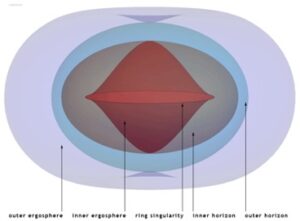
Figure 1: The first picture of a blackhole
Source: Wikimedia Commons
Fourteen billion years ago, the Big Bang caused the universe to begin rapidly expanding, forming galaxies like the Milky Way as it cooled and settled. Scientists believed that over time, gravity would begin to pull all this matter together, slowing the outward expansion. Then, in 1998, scientists made a startling discovery: the expansion was not slowing, it was accelerating. What could be responsible for this unexpected acceleration? Currently, scientists believe the acceleration is due to Dark Energy and Dark Matter – names given to undiscovered energy and matter that must be present to align scientific observations with the known laws of physics. Roughly 27% of the universe is composed of Dark Matter: an elusive type of matter hypothesized to be made from different types of subatomic particles than visible matter (Dark Energy, Dark Matter, 2021). However, while scientists know Dark Matter must exist, it remains mostly a mystery.
Now, a team of astronomers and cosmologists have proposed that Primordial Black Holes (PBHs), black holes formed in the early universe, may compose the majority of Dark Matter. In order to understand how this is possible, we must travel back to the early stages of the universe. According to cosmologists, approximately 10-36 seconds after the Big Bang, the universe underwent ‘inflation’ – a period (barely a fraction of a second) in which the universe rapidly expanded, growing from a singularity to the massive collection of galaxies we see today (Kavli Institute, 2020). Inflation is believed to be responsible for how our current universe is structured (for example, it’s the reason we observe clusters of galaxies). However, inflation may also have caused the formation of “baby universes,” which are, as the name implies, small universes within our larger universe. Smaller baby universes would eventually collapse into a black hole, but baby universes above a critical mass would not. According to Einstein’s theory of gravity, baby universes above a critical mass may “appear different to an observer on the inside and the outside” (Kavli Institute, 2020). An observer inside the baby universe would not know they were in a baby universe – they would observe that they were inside an expanding universe just like our own. However, an observer outside the baby universe (such as astronomers on earth) would see the baby universe as a Primordial Black Hole (Kavli Institute, 2020).
How does this relate to Dark Matter? Observers on earth are not able to see past a PBH’s event horizon (the boundary at which everything, including light, is trapped inside a black hole). This means that if the PBHs were concealing a large baby universe, we would not be able to see it. However, that large baby universe is still composed of matter, and as such, may be the elusive ‘Dark Matter’ that researchers have been unable to locate (Kavli Institute, 2020).
The next step for the research team is to confirm their theory by studying suitable PBHs. They have already found a PBH, roughly the mass of the moon, that has the qualities to fit their hypothesis. However, they plan to continue examining the Andromeda Galaxy in order to find more PBHs and test whether these baby universes are the mystery behind Dark Matter (Kavli Institute, 2020).
References
Kusenko, A., Sasaki, M., Sugiyama, S., Takada, M., Takhistov, V., & Vitagliano, E. (2020). Exploring Primordial Black Holes from the Multiverse with Optical Telescopes. Physical Review Letters, 125(18). doi:10.1103/physrevlett.125.181304
Kavli Institute for the Physics and Mathematics of the Universe. (2020, December 28). Primordial black holes and the search for dark matter from the multiverse. ScienceDaily. Retrieved January 08, 2021 from www.sciencedaily.com/releases/2020/12/201228095432.htm
Dark Energy, Dark Matter | Science Mission Directorate. (n.d.). NASA Science. Retrieved January 8, 2021, from https://science.nasa.gov/astrophysics/focus-areas/what-is-dark-energy
Related Posts
Superconductivity: Past, Present and Future
Figure 1: Dutch physicist Heike Kamerlingh Onnes. Onnes lay the...
Read MoreMagnetic Reconnection Offers New Insight into Harnessing Energy from Black Holes
Figure 1: Basic architecture of a rotating black hole. In...
Read MoreNew-clear Reactors: Newly approved nuclear reactor designs seek to improve on old ones
Figure 1: Shown by the red line, the sharp increase...
Read MoreMaddie Brown



